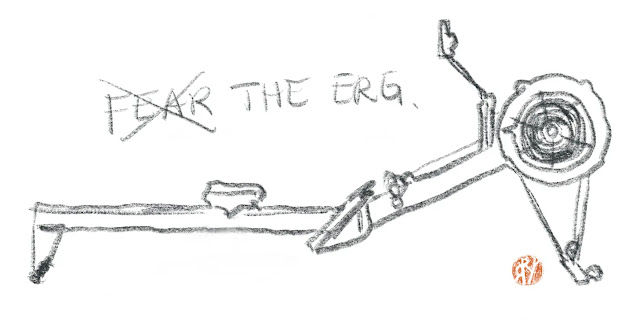Moving Rowing Forward: Drew Ginn Leading the Way Again
 |
| Sculling silhouette (Photo by Kosala Bandara/Flickr) |
In our sport, there is a pervasive feeling that some magic is at work when we watch fast crews perform. While there is certainly splendor in watching great athletes achieve to their potential, both on their own and as part of a unit, the secret is that there are no secrets. There is only work. Drew Ginn–a three-time Olympic gold medalist, and bronze medalist in Bled earlier this year–knows that as well as anyone.
Perhaps that's the reason he's so willing to share.
After all, as Kevin Light says in a recent interview about his new film on Mike Spracklen for RowingNews.com, "I don't think showing people from other countries that we trained hard to achieve what we did will make it any easier to do. In some cases it may make it even harder to do."
Ginn has been hard at work training lately, and I can say this definitively given his most recent blog posts. On Monday, Ginn posted an article to his blog, Rudderfish, reflecting on a recent 6k test, and sharing both previous scores as well as his results from the current test on sliders. Earlier today, Ginn posted the results from his 2k test (also on sliders), which is, to date, quite revolutionary for any elite-level rower. It's great to see that one of the most accomplished athletes in our sport is willing to share so much, and push the envelope, and it also points out just how far behind the curve we are in that respect, when compared to other sports.
Take the NFL Combine, for example. Everyone knows the specific, raw data that each athlete entering the NFL draft has produced following a series of physical tests. While that is a 'ball sport,' and there is less of a direct correlation between testing and playing the game, it is still public knowledge and gives the opposition an idea of an athlete's physical capabilities. There are comparable examples in nearly every other major sport. In cycling, they even go so far as to broadcast the heart rates of the athletes during racing–something that could certainly be used to gain an advantage, or even time an attack in a given stage.
While, in my opinion, going to the level of sharing vital signs for athletes during competition is too far, it seems to me that the greater rowing community benefits when athletes are willing to share test results and analyses in the manner of Drew Ginn, as the community can gain a better understanding of just how much work (and how much physical talent) it takes to succeed at the world level. At the same time, it helps the wider community to identify more closely with elite athletes, as the elites suffer the same trials and tests that all rowers go through, albeit at a different level.
With that shared experience comes a greater appreciation for and knowledge of the sport, and a better understanding across all levels, which moves the sport in the right direction. So, thank you, Drew, for taking what many would consider a risk in posting articles like the ones mentioned above. In so doing, you're moving world rowing into the 21st century, and giving athletes at every level a window into the highest level of our sport.
-RR



